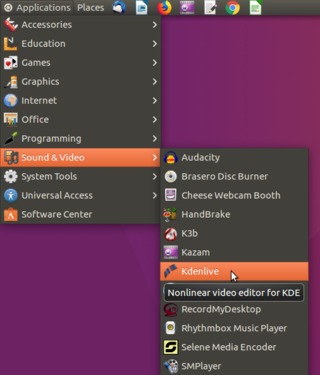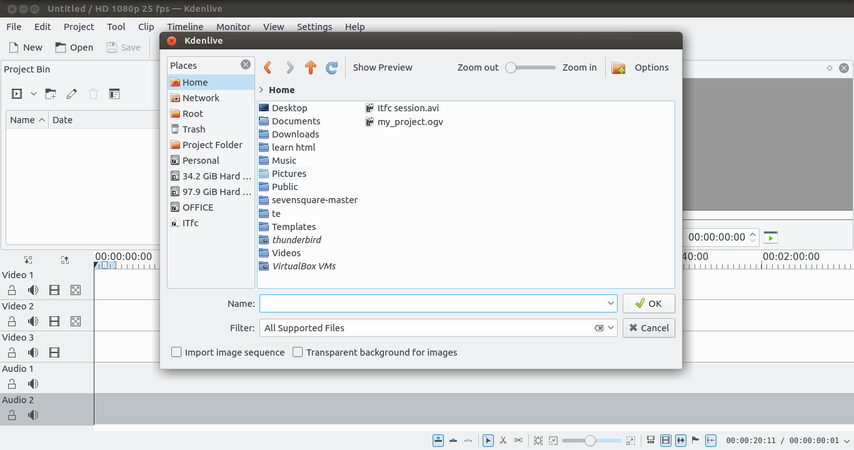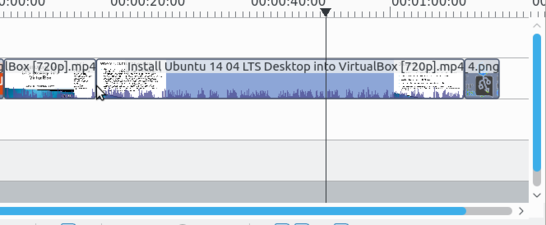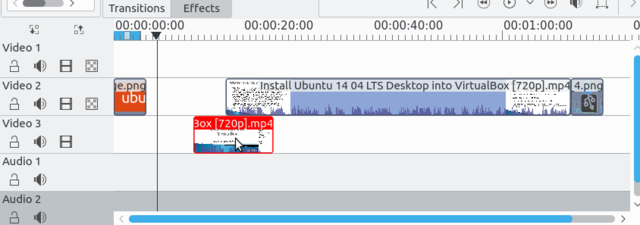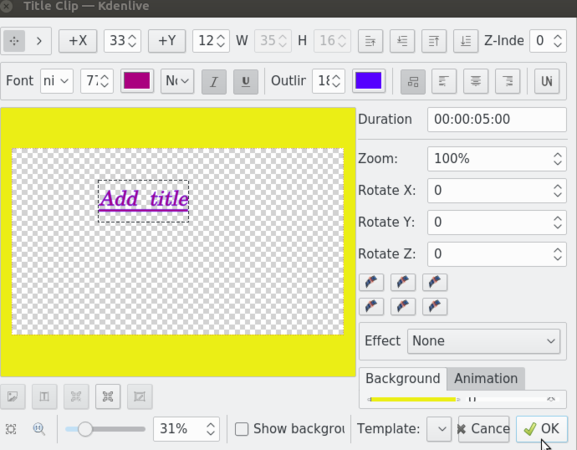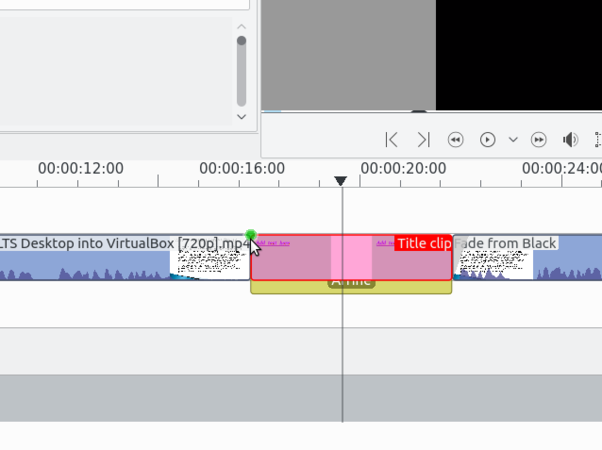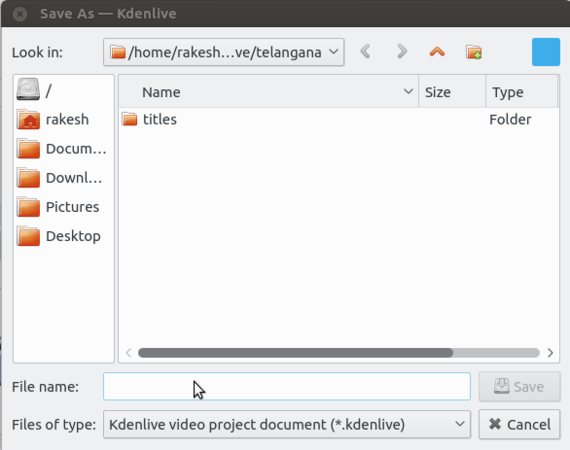Learn Kdenlive
Introduction
Basic information
| ICT Competency | Kdenlive Video editor is generic resource creation tool |
| Educational application and relevance | Working with video, audio, text and image resources. This can be used in digital story telling videos |
| Version | 21.12 (Stable Version) - as of May 2024 |
| Other similar applications | Openshot video editor, Pitivi and advance Lightwork |
| The application on mobiles and tablets | Cyberlink Powerdirector, Splice |
| Development and community help | Official Website |
Overview of features
Kdenlive is an open-source video editing software aimed for Linux Operating System, but it also available for Windows and Mac systems. Because of the simple interface and wide range of video editing features, this tools largely using by teachers and teacher-educators to create/edit video resources for their classrooms.
Here are some key features and benefits of Kdenlive for teachers:
User-Friendly Interface: Kdenlive offers a user-friendly interface that is easy to navigate, making it suitable for teachers who may not have extensive experience with video editing software.
Multi-track Editing: Teachers can work with multiple video and audio tracks simultaneously, allowing for more complex and professional-looking video projects.
Effects and Transitions: Kdenlive provides a range of effects and transitions that teachers can use to enhance their videos, such as fades, wipes, color correction, and more.
Timeline Editing: The timeline editing feature allows teachers to precisely edit and arrange clips, audio, and effects on a timeline, giving them full control over the video editing process.
A wide range of effects and transitions. Audio effects including normalization, phase and pitch shifting, limiting, volume adjustment, reverb and equalization filters as well as others. Video effects include options for masking, blue-screen, distortions, rotations, color tools, blurring, obscuring and others.
Export Options: Kdenlive supports a variety of export formats, including popular formats like MP4, AVI, and MKV, making it easy for teachers to share their videos with students or upload them to online platforms.
Overall, Kdenlive is a versatile and powerful video editing tool that can help teachers create engaging and informative video content for their teaching-learning process.
Installation
For Ubuntu OS
- The application is part of the Ubuntu custom distribution.
- In case you do not find it on your computer, you can install by choosing “Kdenlive” in Ubuntu Software Center
- If you would like to install through the terminal follow these steps below:
- Open terminal (Menu -> System tools -> Mate terminal) or use use keyboard short keys Ctrl+Alt+t
- Once the terminal window opens, in front of the dollar($) symbol just type below command.
- sudo apt install kdenlive
- You will be prompted to enter your Ubuntu user password. Type your password (note that it won't be displayed on the screen as you type) and press Enter again to start the installation process.
For Windows OS
- Download the Kdenlive exe file from the official website link: https://kdenlive.org/en/download/.
- Click on the link to visit the download page.
- Look for the download link for the Windows version of Kdenlive (usually labeled as "Download for Windows" or similar).
- Click on the download link to start downloading the .exe file.
- Once the .exe file is downloaded to your Windows computer, locate the file in your Downloads folder or the folder where your browser saves downloads.
- Double-click the .exe file to start the Kdenlive installation process. This action will open the Kdenlive installation dialog box on your screen.
- Follow the on-screen instructions provided by the installation wizard to install the Kdenlive software (This typically involves selecting installation options (such as language preferences) and agreeing to the software's terms and conditions).
- Wait for the installation process to complete. This may take a few minutes depending on your computer's performance.
- Once the installation is finished, you will see a confirmation message indicating that Kdenlive has been successfully installed on your computer.
For Mac OS
- Download the Kdenlive .dmg file from the official website link: https://kdenlive.org/en/download/.
- Look for the download link for Mac OS X (often labeled as "Download for macOS" or similar).
- Click on the download link to start downloading the .dmg file.
- Once the .dmg file is downloaded, locate it in your Downloads folder or the folder where your browser saves downloads.
- Open the .dmg File:
- Double-click the .dmg file to mount the Kdenlive disk image.
- A new window will appear showing the contents of the disk image.
- Install Kdenlive:
- Drag the Kdenlive application icon from the disk image window to your Applications folder.
- This action will copy Kdenlive to your Applications folder, making it available for use.
Working with the application
When you start to working with any multimedia files (videos, images, animation) the first step is creating a new folder for our new project. This will help to find your all project related files. Create a folder anywhere under your home folder or Desktop. To open Kdenlive
To open Kdenlive, in Ubuntu - go-to"Applications → Sound and video → Kdenlive" and for the Windows “Start→ search for Kdenlive”.
This is what your user interface will look like when the Kdenlive application launches on your computer.
- Opening kdenlive from menu option
[1] Project Bin, Library: (Elaborate) (use links which is used in current handout)
The project bin is your media library. It stores all your video clips, audio files, and images for your project. You can import media from your computer and organize them with folders. The bin acts as a bridge, letting you drag and drop clips to the timeline for editing in the next step.
[2] Clip Monitor:
This is where the clip selected in the project bin is displayed. When you want to preview a clip before getting into the timeline, you can directly preview it from here.
[3] Project Monitor:
This is where the content of the timeline is being displayed with all the edits, effects and compositions applied in the tracks. It displays where your cursor is on the timeline.
[4] Timeline:
The most important section of the Kdenlive tool and most of the action/edit is taking place in the timeline. Here you put your sources in the order in which they will appear in the final video, make your edits (cuts and trimmings), apply effects, add compositions and transitions, and add audio and soundtracks. In the Editing section you will learn more about this using tracks and organizing your files
[5] Timeline Toolbar:
This is where you find all the editing related tools and features to edit your video project.
[6] Audio Mixer:
This section holds the audio mixing panel where you control the volume and pan of the various audio tracks and the master.
[7] Menu Bar/Toolbar:
At the top of the Kdnelive window screen you have access to the Kdnelive menu bar. The Workspace Layouts and the Main Toolbar.
Create new project
After launching Kdenlive, the first thing to do is create a new project. What is a project, then? A project keeps all the work on your video or slideshow. You can save the project and continue your work later, or restore your work if you need to edit something after you've finished it You are able to pick up where you left off once you save it as a project.
Selecting a project setting, prompts a dialog box to show up on your screen when you select File > New > Project. There are several folders, and each folder contains multiple project options if you expand. The most important question at this point is: what settings should be selected? You can select 4K, HD 720P, Full HD 1080P, and many other resolutions based on your needs To put it another way, selecting 4K will cause your video to be rendered in its highest resolution, which calls for a more advanced hardware setup like only on specific smart 4K TV, High HD display computers and etc; selecting HD 720, on the other hand, will cause it to be rendered in its lowest resolution, making it suitable for usage with a less technical setup like basic smartphones, old computer, tabs. We can use FHD 1080p for learning and exploring; it is an intermediate resolution that is commonly used on YouTube, social media, television, and some movies. There are several project settings under FHD 1080p, Let's select HD 1080p 25 frames profile.
Adding clips
Now that the project is ready, let’s start adding some clips into your project. Click on the “Add Clip” icon, directly it opens the file dialogue, start browsing your local video clips, audio clips, images to start your edit.
Arranging files in tracks
After you have imported files, the next step is to adding files into the timeline and arranging it for editing. Timeline is the place where the media clips will be edited. There are two different types of tracks, Video and Audio. Video tracks can contain any kind of clip, audio tracks as well but when dropping a video file to the audio track, only the audio will be used.
To add clips into tracks, select file from the project files section and drag and drop it in the tracks where your files are suited. Any time by pressing "space" button(or click on the “Play” button in the project monitor) to see the preview of edited work.
Once a clip is dropped on a track, it can be moved (drag and drop it) to another place on the same track or onto another track.
Cutting, moving and deleting clips
- To cut a clip into two parts, select Razor from "Edit --> Toolbar". The mouse cursor will change to a dotted line and razor icon. Click on a clip at the point you want to cut or slice it. And also if you want to remove one part of this clip, just right click on the clip and remove clip.
- After you cut a clip, now it will be two part. Click on cursor icon (Select Mode), click on a clip which you want to move. Then drag the clip to a new position on the timeline, and drop it.
- To cut a clip, the easiest way is to place the timeline cursor where you want to cut the clip, then select the clip (left click in it) and use the menu "Timeline --> Current Clip --> Cut Clip" (Keyboard shortcut is Shift + R).
Grouping and ungrouping audio
Although audio and video comes together in a clip, there may be a possibility that you need either only audio or only video as your requirement. At such times you can ungroup them so that you can use the video with some other audio and viceversa.
To do this, Once you import the video, right click on the timeline --> click Ungroup.
Similarly, you can group an audio with video by selecting both and then right clicking on any then click on Group.
Sound effects
Sound effect can be given for a video in Kdenlive in a very easy and efficient method.
To give the sound effect right click on timeline window that appears to the bottom of the screen click on "Insert an effect --> Volume (Keyframable)". Immediately you can see a Red colored bubble on Audio timeline. You can flexibly move it to top and bottom to raise and down the volume respectively.
Resizing a clip
A clip can be resized from its start or end by dragging its left or right edge.
If you want a more precise resize, you can place the timeline cursor wherever you want the resize to end and use the menu "Timeline --> Resize Item Start or Timeline --> Resize" Item End.
Removing Space Between Clips
Right click in the space between the clips and choose "Remove Space".
Be aware however that if you have clips on multiple tracks in the timeline and they are not grouped, then removing space may disturb the alignment of the clips between the different tracks the space is only removed from the timeline where you clicked.
Adding titles/subtitles
Titles are text elements that can be added to the timeline and appear over the top of other clips. Titles are created in the Project Tree and then dragged to the timeline like other video clips.
To create a title, choose “Add Title Clip” from the Project toolbar. Below is the title create window.
Here just start adding your title and do the formatting using different tools in it and finally click on “OK”. Once click on the OK, your title file will add to you project tree. Drag drop it on your track for adding into your video.
If you want titles to overlay other footage, you put title clips on video track 1 and have the other footage on video track 2. You also need to retain the affine transition that is automatically added to the title clips if you want the footage visible underneath.
Adding fade in fade out effect
By adding fade-in and fade-out for the clips, it will smoothly changing the slides from one to next.
The most basic type of fade-in and fade-out are the fade from black and fade to black effects. The easiest way to add these to your media files is to move the mouse pointer close to the corner of a clip on the timeline, then click and drag until your fade reaches the desired length.
Adding transition into clips
To add a transition, adjust clips in the timeline so that the end of one overlaps the beginning of another. Then right-click in the timeline at the overlap point, select "Add Transition" , then choose one of the "transitions" from the transition list.
Save project files
Kdenlive needs a project file to save the information that makes up a video project. Information such as the name and location of your project, video and audio files, timeline information, which clips have been trimmed, arranged, etc. This project file you can use it later if you need to do any change in your file. Click on "File --> Save Project", enter your file name and select location for save in that location.
Export/Render as Video
Once done with your all editing work, next is to export your video. This will convert your "OpenShot" project into a single video file, which should work on any platform. Click on the "Render" icon on the top toolbar, video icon at the top menu tool bar (or use the "File --> Export Video" menu). Under rendering section there are many things which you need to configure to export your project as video.
Video profile : Preset rendering profiles to choose from. The rendering profiles are grouped into categories.
- When a variable bit rate profile is selected, the File Size section displays a drop down for choosing the Video quality you want.
- Select "mp4" format from the format list.
- File size will be differ from your parameter selection
- In the last section, clicking on "full project" will render your entire project as video and by clicking on "Selected zone" will render the portion you are selected.
- Finally click on "Render to file " option to start the process.
Video cutter tool
Kdenlive is a powerful app for video editing and movie creation, but if you are looking for something simple and light-weight that can quickly trim of those long videos, then try VidCutter tool. It is a free and open source video trimmer for Linux, Windows, and Mac. From VidCutter, you can easily do most common video editing like trim, split, and join videos.
VidCutter supports popular video formats including MP4 (which is default video format of smartphones), AVI (used by some cameras), MOV, WMV, MPEG, and FLV.
To install this tool in your ubuntu,
Method 1 : From the PPA
Open a terminal (Ctrl+Alt+T) and copy paste these following commands one by one:
sudo add-apt-repository ppa:ozmartian/apps
sudo apt-get update
sudo apt-get install qml-module-qtmultimedia vidcutter
Method 2 : App image file
Download App Image file from from this link. and follow the instruction mentioned in the same link to run it in your system. But it is a bit complicated for the new users.
From the above link you can download this application for windows computers.
Advanced features
Multi-track video editing - Kdenlive allows you to use and arrange several audio and video tracks, each one can be locked or muted to your convenience.
Configurable interface and shortcuts -You can arrange and save your custom interface layouts to fit your workflow.
Keyboard shortcuts can also be configured to match your preferences.
Many effects and transitions - Dozens of effects are available, ranging from color correction to audio adjustments, as well as all the standard transform options.
Automatic backup - Your project file is automatically backed up every few minutes, and older versions of the project file are also kept in case you need to roll back to a previous version.
Ideas for resource creation
If you want to create a video by yourself using images or any existing OER video you can trim those and put some other background voices.

